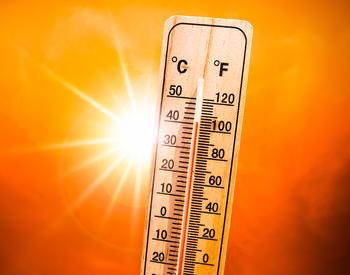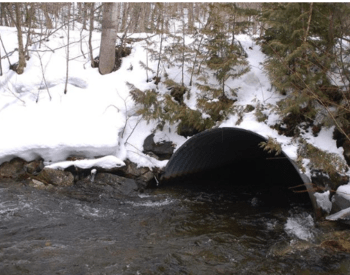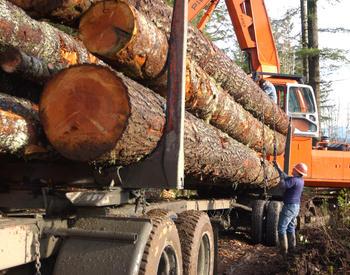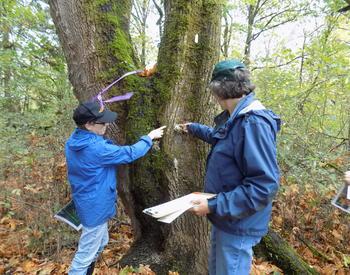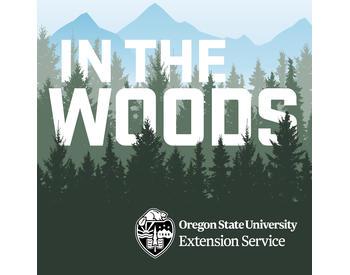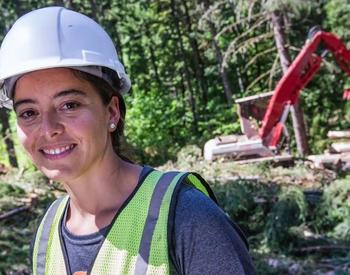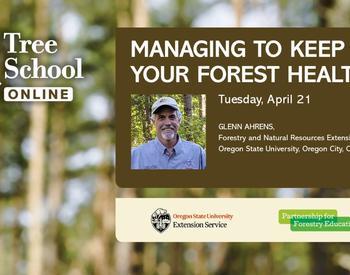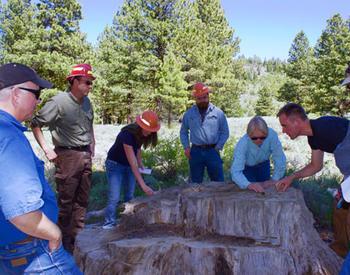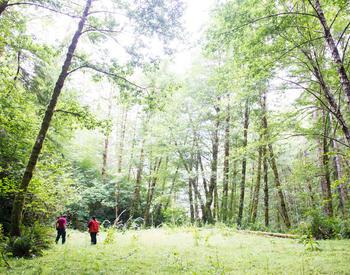A Mini-symposium on the June 2021 Heat Dome organized by OSU provided a good explanation of what caused this extraordinary event and the impacts on trees across the Pacific Northwest. Here are some insights into local site factors that affect vulnerability to damage from this kind of heat event.
What is a heat dome?
A “heat dome” occurs when high-pressure circulation in the atmosphere acts like a dome or cap. This dome traps heat at the surface and favors the formation of a heat wave. The map of atmospheric pressure contours shows the zone of persistent high pressure that trapped the heat in June 2021.
What sites experienced the most damage?
Observations across the state showed that damage was greatest on the western slopes of the Coast Range. In this area, trees are not acclimated to intense heat. Coastal trees were also earlier in their seasonal stage of development compared to those in the Willamette Valley and west Cascades.
In June 2021, the greatest damage occurred on trees (or parts of trees) in locations exposed to the south and west. Damage was especially severe along highways, roads, openings and steep slopes with more exposure. In areas that burned during the 2020 wildfires, satellite images show that temperatures were 20 degrees higher than in the forest.
Damage was less in the woods. Mutual shading from the canopy, along with some cooling effect from the moist forest (evapotranspiration), limited the damage.
How much heat can our native trees tolerate?
Researchers at the symposium explored what is known about “thermotolerance” of native trees. For Douglas-fir, research indicates the following thresholds of thermotolerance for leaves (needles):
- Impaired function: >110°F
- Irreversible damage: 120–130°F
- Death: 130–140°F
Brown, scorched needles are an indication that leaf temperature exceeded the tolerance. Note that leaf temperatures in direct sunlight can exceed air temperature by 10 degrees or more.
How does heat affect trees?
Scorch damage symptoms varied widely, but they can be categorized into three basic types.
- Exposed foliage of all ages scorched by extreme heat.
- New growth (tips) scorched, but older foliage undamaged.
- New growth undamaged, but older foliage scorched. This pattern was often due to impaired function caused by Swiss needle cast or other diseases.
What are the long-term impacts?
Long-term impacts on tree survival and health are not clear. This is especially true for trees in the midrange of damage symptoms. Large trees with low amounts of foliar scorching likely will suffer just a loss of some needles and a temporary setback.
At the other end of the spectrum are small seedlings in exposed areas. In this case, the whole plant can be heated up above the mortality threshold. The result can be extensive mortality, particularly in bare, rocky sites or burned areas.
It’s not just the heat
The overall stress on trees due to hot, dry weather results from the combination of heat, dry air and dry soil. Multiple years of hot drought are the prime suspect in the decline of various species on certain sites and soils. These include western redcedar across many parts of the north Willamette Valley and Douglas-fir in southwestern Oregon and the Willamette Valley. Heat waves such as the one in June 2021 add to the problem and can push marginal trees over the edge.
Implications for management
The heat dome, along with multiple years of relatively hot and dry conditions, emphasizes the importance of “knowing the land.”
It is important to know where trees are likely to experience extreme conditions — hot and dry, as well as cold or wet. This involves knowing your soils, topographic exposures and tree species characteristics. This knowledge will help you identify where trees may be growing at the margins of their tolerance for hot, dry conditions. These trees will be the most vulnerable during a heat wave.
In some cases, you can use this knowledge to reduce the risk of tree damage.
- During extreme heat and drought events, there is higher vulnerability at the south and west edges of openings. Interior forest conditions moderate temperature and atmospheric drying. Managing forests in larger stand units will reduce the amount of open edges.
- Shade and shelter can be particularly important for seedlings and saplings. Heat damage can be reduced by managing for moderate amounts of vegetation. Do not allow excessive levels of vegetative competition, however.
- Another practice to reduce climatic extremes is to use a shelterwood silviculture system. In this system, residual trees are left during timber harvest. These trees moderate climatic extremes and provide seed sources for natural regeneration.
We can anticipate future heat and drought in northwestern Oregon. To be prepared, we can adopt practices used in hotter and drier regions (southwest, central and eastern Oregon). These practices include paying more attention to planting on the shady side of stumps or debris and using artificial shades for seedlings. It's also important to favor heat- and drought-tolerant species. Finally, thinning can reduce competition stress.
